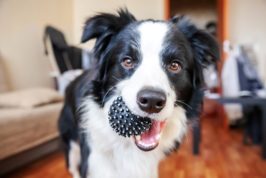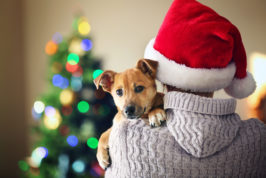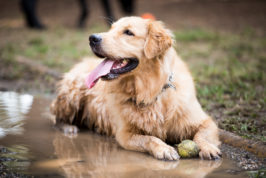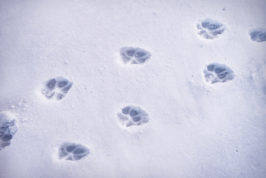There’s no doubt about it, understanding dog behaviour is complex, and there’s a lot of misleading and inaccurate information out there. In this article, we aim to explore some of the more common dog behaviours, learn how to manage them, and debunk a few myths along the way!
What is normal dog behaviour?
Just like humans, all dogs are different and what is normal behaviour for one dog may be abnormal for another. You are best placed to know what is normal for your own dog and any behaviour that is out of the ordinary could indicate that something is wrong.
Dog behaviour is also open to interpretation by different individuals. Behavioural problems such as barking or chasing are not necessarily considered abnormal dog behaviour. They may be undesirable behaviours, but they are often a ‘normal’ response to a given situation.
Let’s take a look at some of the more common behaviours exhibited by dogs.
Submissive behaviours
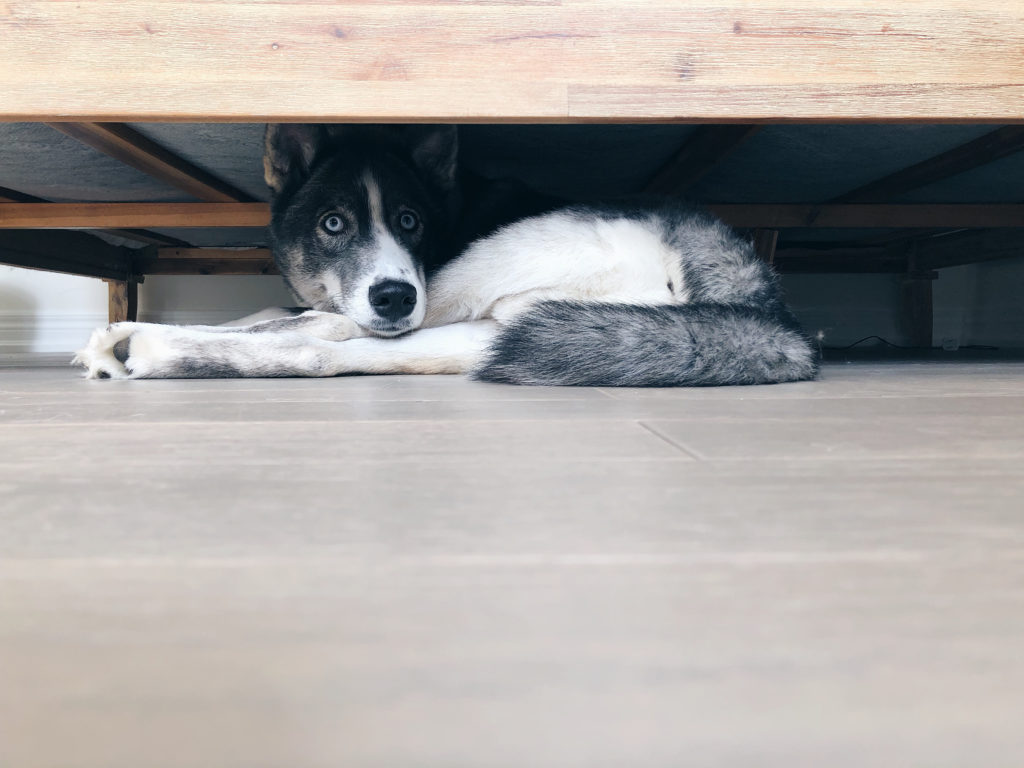
There are many different types of submissive behaviour in dogs, and they are usually an attempt by the dog to show that he is not a threat to either the human or another animal that he is interacting with. Submissive behaviours are also sometimes referred to as appeasement behaviours. Some of the more obvious submissive behaviours include:
- Freezing
- Tail between the legs
- Sinking to the floor
- Rolling over
- Submissive urination
Other, more subtle behaviours include avoiding eye contact, lip licking and yawning.
Confusingly, some behaviours can mean very different things in different contexts. For example, the dog that jumps up at his owner when he gets home from work is probably just happy to see him, but the dog that is frantically jumping up at a crowd of strangers is more likely demonstrating submission or appeasement and letting them know he is anxious about the situation.
Another example is licking. A dog licking his owner is usually showing affection but the same dog licking a stranger, particularly their ears and face, is actually being submissive. When these behaviours are interpreted incorrectly, problems can arise – particularly if the dog is very uncomfortable with a situation and a human mistakes this for excitement.
Aggression
Aggressive dog behaviour can be very upsetting and frightening for everyone involved. Aggression may occur towards other dogs, people, or sometimes both. There is a well-recognised ‘ladder of aggression‘, which is very helpful when it comes to understanding dog aggression.
There are usually plenty of early signs that a dog is feeling uncomfortable, which can be very subtle. These are often the appeasement behaviours discussed above, such as looking away, yawning and lip licking. If these behaviours are missed or ignored and the dog continues to feel worried then he may progress ‘up the ladder’ to show more obvious signs such as stiffening up, staring and growling. If these signs are still ignored, then this is when the dog may progress to snapping or biting.
Never tell your dog off for showing any of these behavioural signs as this could result in them skipping several ‘rungs’ on the ladder and progressing straight to biting without prior warning.
Aggression is an issue to be taken very seriously and you should seek the advice of a qualified behaviourist if it becomes a problem. Ideally, choose one that is a member of the APBC (Association of Pet Behaviour Counsellors), as they are a recognised body of professionals who adhere to certain standards.
Separation anxiety
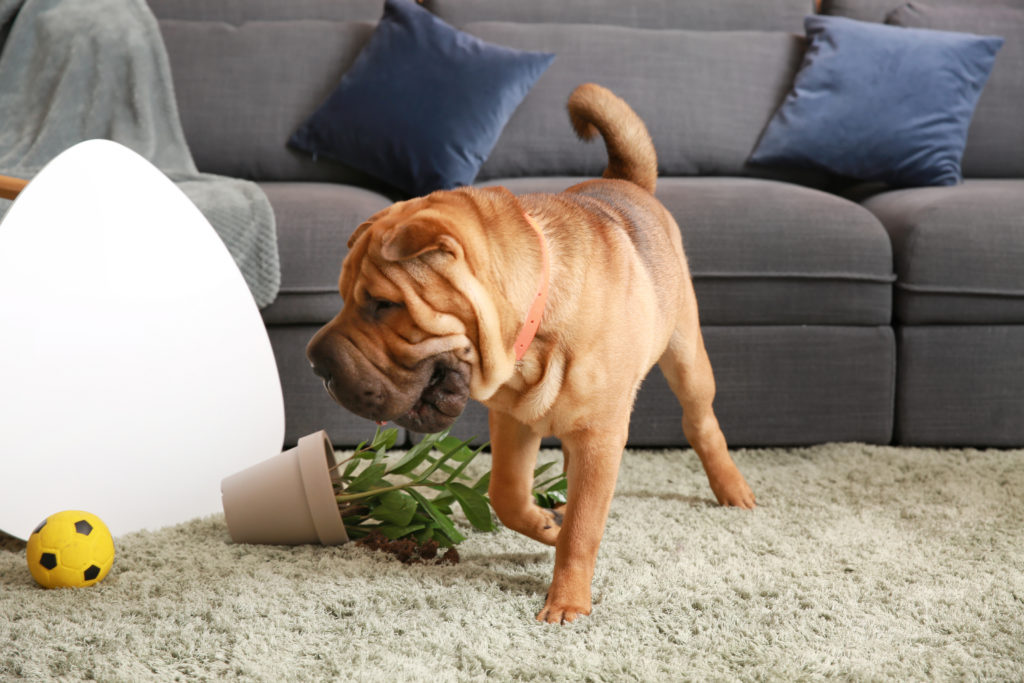
Separation anxiety is a very common issue that may manifest in a variety of different ways when a dog is anxious about being left alone or separated from its owner. The most common behaviours include:
- Excessive vocalisation (usually howling, whining or barking)
- Excessive excitement when owner returns home
- Destruction of the environment
- Inappropriate urination or defaecation
Sadly, there’s no quick fix to this behaviour once it’s established, but with the help of a qualified behaviourist, it’s usually possible for a dog to learn that it’s ok to be left alone. There are, however, a few things you can do to try and prevent this type of behaviour from developing:
- Try and discourage attention-seeking behaviour, such as pawing or licking. The best way to do this is to ignore the behaviour then give your dog attention once he has settled.
- Encourage your dog to spend some time without your attention when you are in the house. This can be done by providing him with a puzzle-feeder or chew whilst your attention is on the TV or you are talking to someone else.
- Begin by leaving your dog for very short periods and gradually build up to leaving him for longer. This teaches him that you will always come back to him.
Behaviour of dogs in season
Female dogs in season (heat) can sometimes show hormonal behavioural changes, which are temporary and will usually disappear as they come out of season. Different bitches will show different signs, and some may not show any behaviour changes at all.
Common behaviours include:
- Becoming clingy or preferring solitude
- Urinating more frequently
- Becoming more outgoing with other dogs (particularly males)
- Mounting behaviour
If your bitch has recently had a season and is showing nesting behaviours, such as gathering toys or unusual guarding behaviour or aggression, then speak to your vet as these could all be signs that she is having a phantom pregnancy.
Dog behaviour tips
- Learn to ‘read’ dog body language. There are so many subtle signs that your dog uses to tell you how he or she is feeling in a given situation. The better you become at recognising them, the more likely you are to be able to keep your dog happy and comfortable.
- Discover what is normal behaviour for your dog. Pay close attention to how he or she reacts in a variety of different situations.
- Do not hesitate to seek the help of a qualified behaviourist if you are concerned about your dog’s behaviour. The earlier a problem behaviour is dealt with, the easier it is to rectify. Also, remember that dog behaviour is complex, and it’s sometimes easy for owners to inadvertently make behaviours worse without realising it!
FAQs
Yes, it can. Feeding a dog food that is too high in energy – for example, feeding a ‘working’ dog food to a pet dog, can cause hyperactivity and sometimes excessive barking. Similarly, under-feeding a dog can lead to irritability and occasionally resource guarding.
This is when a dog tries to protect a resource that they deem valuable, for example, food or a toy. Guarding behaviour usually manifests as a dog standing or sitting over an item, usually with their ears back and staring at anyone or any animal that approaches. It is often accompanied by growling and snapping if they are approached too closely. They will often snap or bite if a human or another animal tries to remove the item from them. Seek the advice of a vet or professional behaviourist if your dog is showing guarding behaviour.
Castration reduces a dog’s testosterone levels, which in turn could reduce their confidence. This is why it is usually ill-advised to castrate a male dog that is already nervous or generally fearful. Castration can also sometimes prevent some unwanted sexual behaviours, such as mounting.
Dogs are experts at reading body language and not only that of other dogs, but that of humans too. Your dog will usually be able to pick up on signs that are so subtle you may not even realise you’re showing them! Your dog may adjust his or her behaviour depending on your mood and body language.
Aggression is a complex behaviour and there are a huge number of potential triggers. As such, there is no ‘one size fits all’ approach, and it’s important to seek the advice of your vet or a professional behaviourist who will be able to help.
The first thing to do is to establish why your dog is being destructive. Is it because he or she is bored? Does it happen when they’re is left alone? Is your dog frustrated? Once you have determined the reason for your dog’s destructive behaviour, it will be easier to prevent. There is no quick fix though, and it would be worth seeking the advice of a professional behaviourist for further help.

